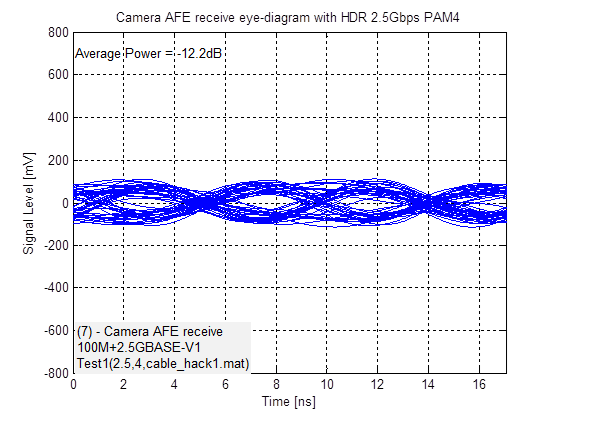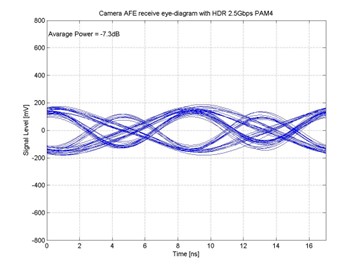Hi Ramanjit,
I want to follow up on our discussion regarding your presentation
https://www.ieee802.org/3/dm/public/0125/ahuja_8023dm_01a_011325_on_upstream_receiver_design_and_performance_ACT.pdf. We ran out of time yesterday, so I want to follow up on the reflector like Jon suggested.
We had talked about:
- How the proposed ACT transmit levels are -3dBm, while you used -9dBm in your simulation.
- That you used additive White Gaussian Noise (WGN) instead of an actual echo signal, which is too pessimistic.
- That I was not able to recreate your simulation results using the simulation code that I have shared with the Task Force.
What I was confused about, and was asking clarification on, was that it sounded like you thought that the fact that you used 6dB lower transmit power and unrealistic echo model did not affect your simulation results. Did I understand correctly
that you do not think that they eye would be open if you used the proposed transmission levels for ACT and more realistic echo modeling?
Below I have included two eye-diagrams from my simulation code:
- The first one is an attempt to recreate your simulation results by reducing the transmit power to -9dBm and emulating the echo by adding 0.25*transmit_signal as echo
- The second one is taken from Slide 19 of my simulation presentation, using bad insertion loss and bad echo, but transmit level of -3dBm
You will see that even for the extreme case where I tried to recreate your simulation, the eye is partially open. Once we go to the -3dBm transmit level and realistic modeling of the echo for a very bad cable, the eye is clearly open.
Ragnar


To unsubscribe from the STDS-802-3-ISAAC list, click the following link: https://listserv.ieee.org/cgi-bin/wa?SUBED1=STDS-802-3-ISAAC&A=1